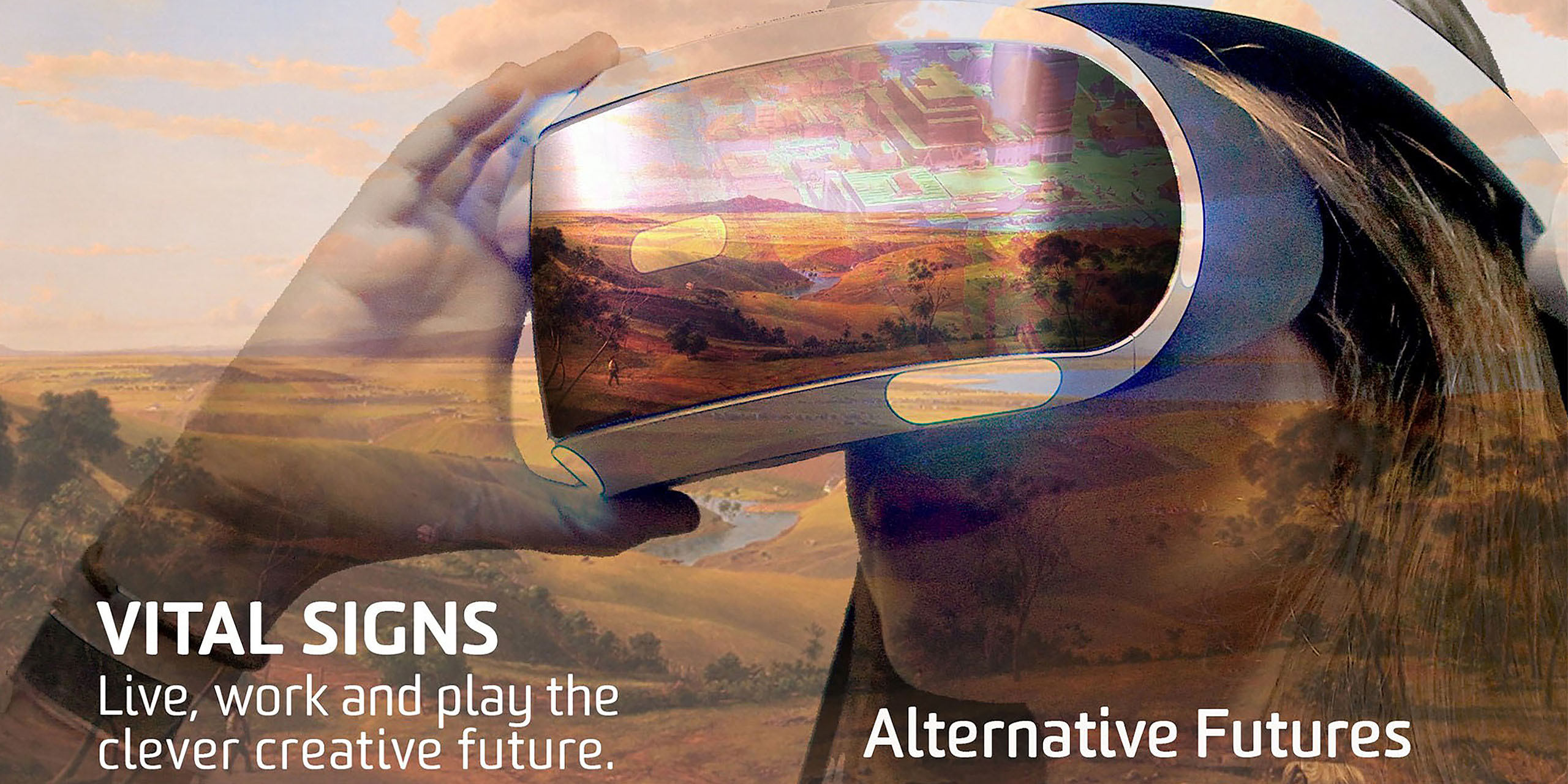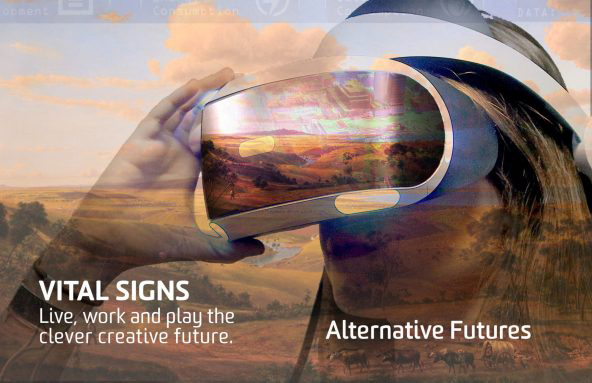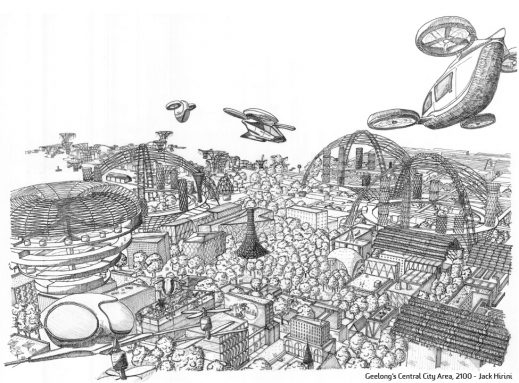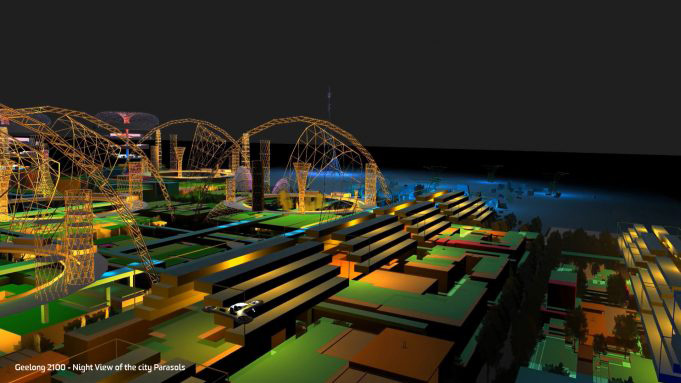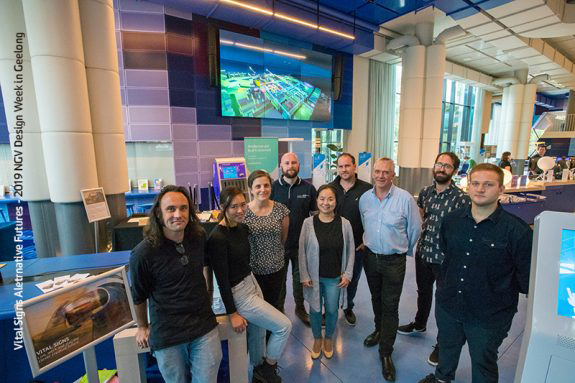‘Vital Signs’ attained a high level of design excellence by encapsulating 3 different forms of engagement each of which were tailored according to the experiences the students aimed to create through varying representations of alternative design futures.
Modelling a range of population forecasts over an 80-year timeframe, the exhibition comprised an extensive range of mixed media which was digitally captured and presented on a 9 screen display in the Geelong Library and Geelong Gallery.
3D printed models of Geelong’s central area were also generated and displayed with immersive media (AR/VR) which enabled visitors to visually explore new spatial experiences.

